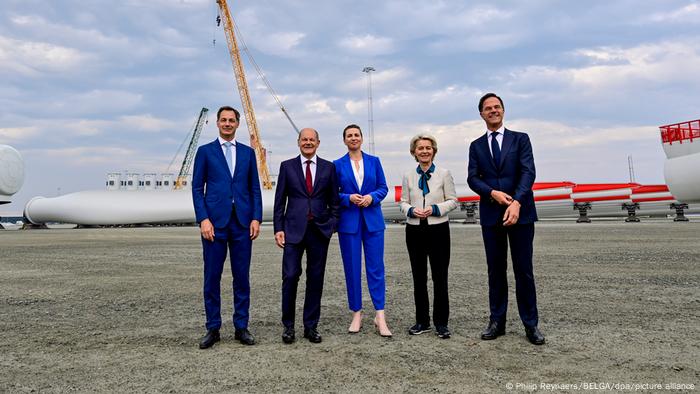
Just four years ago, about half of Russia’s coal exports went west to Europe. At the beginning of this year, more than 50% of the coal needed by Germany, the largest economy in the European Union, imported from Russia. Now those days are gone forever.
On 10 August, after a four-month transition period, the EU embargo on coal imports from the Russian Federation, introduced in early April as part of the fifth package of sanctions over Russian aggression against Ukraine, came into force. And even if this sanctions measure is lifted, there will still be no return to the past: during the current decade, most European countries intend to completely abandon the use of fossil fuels, the most harmful to the global climate, in the electric power industry. Thus, Russian coal miners finally lost the European sales market.
EU Coal Embargo: Kuzbass, Russian Railways, Ust-Luga and Murmansk Will Suffer
Such a loss will not force Vladimir Putin to stop the war in Ukraine – the European Union has no illusions about that. It is understood here that the coal embargo is just one of many Western sanctions aimed at maximizing the price of aggression for Russia. However, for several important sectors of the Russian economy and for some regions of the Russian Federation, the Europeans’ refusal of Russian coal will certainly result in tangible losses.
Miners in Kuzbass and other coal regions in the Russian Federation will suffer the most. Considerable damage will also be suffered by a large Russian employer like the Russian Railways company, for which coal transport is one of the main sources of income. Furthermore, it will not be possible to fully compensate for the losses that will now arise in the European direction by increasing the offer to Asian consumers: transport capacities in the east direction are limited and it will take years and large investments to increase rail transport capacity in the Baikal region. and in the Far East.
Coal transshipment in the port of Murmansk
Russian coal-oriented ports on the Baltic, especially Ust-Luga, will also suffer, as will the transport hub of Murmansk, because the concept of their development was largely associated with hopes of growing coal exports. Possible deliveries from these ports to countries in Africa and Asia are unlikely to compensate for the loss of large and solvent European buyers.
Coal Is Expensive Now, But There’s A Lot Of It On The World Market
And these, in turn, in the four months since the embargo was announced, having fulfilled the contracts previously concluded with Russian companies, managed to reorient themselves towards alternative suppliers. Fortunately, there is no shortage of coal on the world market, although now, like other energy sources, it is extremely expensive: over US$300 per ton instead of around US$60 in early 2021. However, immediately after the Russian attack on Ukraine, prices on stock exchanges soared to over 400 dollars.
“Now there are enough offers from South Africa, Australia, the US, Colombia or Indonesia,” Alexander Bethe, chairman of the board of the German Coal Importers Association (Verein der Kohlenimporteure, VDKI), told DW.
It is true that coal from different parts of the world has specific properties and characteristics, however, the industry representative noted, German mills and other industrial consumers had enough time to test. In addition, Australia, the US and Colombia have been the main coal suppliers to Germany in recent years, along with Russia.
Olaf Scholz: There will be no coal renaissance
Alexander Bethe assumes that from September onwards, demand for coal in Germany, which interrupted its own production at the end of 2018, will increase sharply, as, as part of emergency measures to save scarce natural gas, it is now being withdrawn. from the reserve and launched to replace the gas. However, the head of the German Union of Coal Importers does not expect any extraordinary boom: according to his forecast, the volume of deliveries from abroad will increase by around 11% compared to 2021. After all, part of the newly launched plants will work with lignite, and is mined in the open, in quarries, in Germany itself.

May 18, 2022. German Chancellor Scholz (second from left) with the prime ministers of Belgium, Denmark, the Netherlands and the head of the European Commission after signing an agreement on the joint development of wind energy
Furthermore, this increase in demand for coal will be short-lived. “What should not happen under any circumstances is that we are going to slide into some kind of global renaissance of fossil fuels and especially coal,” warns German Chancellor Olaf Scholz. He said the current reopening of already decommissioned coal-fired power plants is “a strictly time-limited emergency measure that should not adversely affect the achievement of our climate targets.”
In other words, in Germany and the European Union as a whole, coal has not only long-term prospects, but also medium-term prospects. And Russian coal even more so.
To see also:
Source: DW
James Springer is a renowned author and opinion writer, known for his bold and thought-provoking articles on a wide range of topics. He currently works as a writer at 247 news reel, where he uses his unique voice and sharp wit to offer fresh perspectives on current events. His articles are widely read and shared and has earned him a reputation as a talented and insightful writer.